Nandan Ghiya‘s deFacebook.portrait series…
[via the creators project]
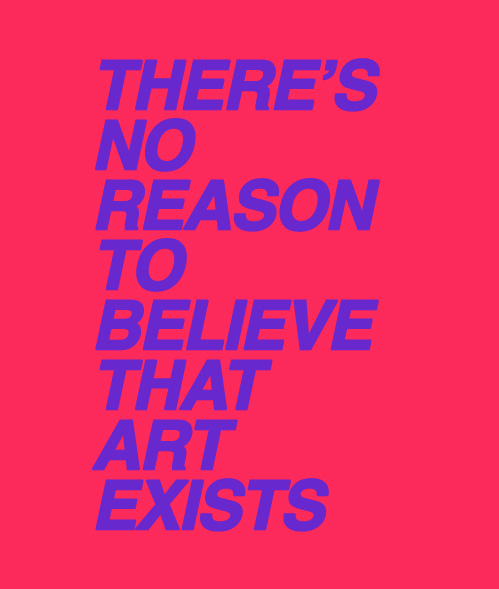
Maurizio Nannucci, There’s no reason to believe that art exists…
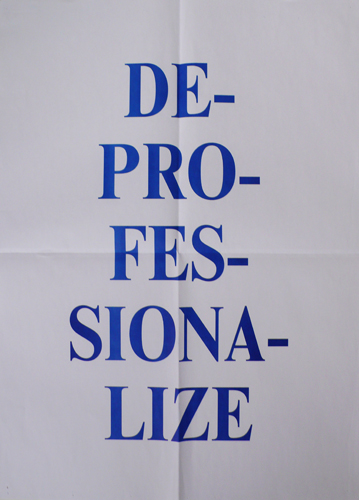
David Horvitz, Deprofessionalize poster…
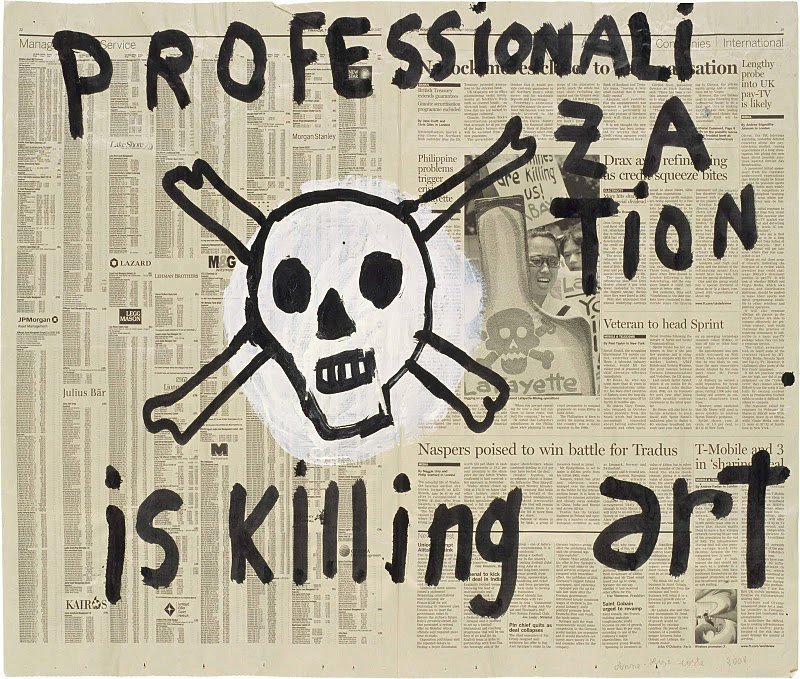
Ann-Elise Coste, ‘Professionalization is killing art’ (2008)
[via pietmondriaan]
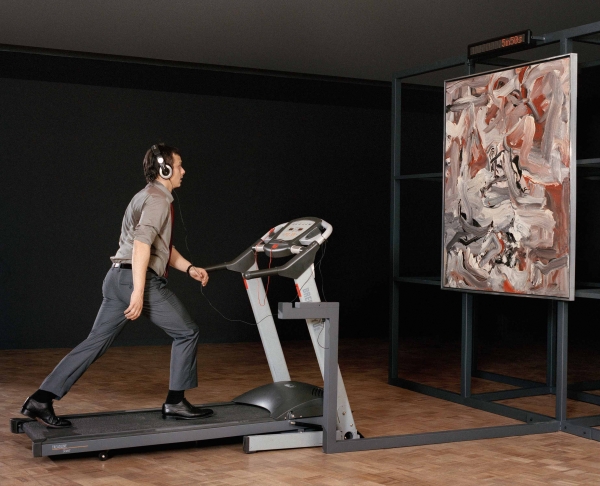
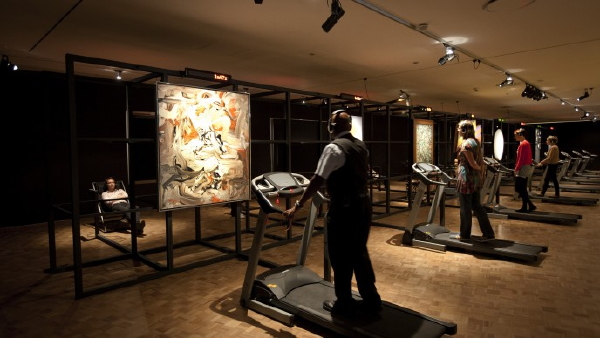
“In cooperation with Gemeentemuseum The Hague, the Kunsthal Rotterdam proudly presents Museum Minutes, an exhibition in which visitors are tempted into spending longer looking at art. The aim of the exhibition is to extend the average time that museum visitors spend looking at individual artworks (currently 9 seconds). A remarkable total installation presents an amazing collection of artworks exhibited in such a way that visitors can experience them in a more intensive fashion.”
[via rebelart]

Music for Sleeping Children is an experimental collaboration between internationally recognized visual artist Charlie White and Mercury-nominated musician and producer Boom Bip (also known as Bryan Hollon). The project stems from White’s investigations of the representation of American adolescence, and was born from a relationship forged between White and Hollon in 2009 when they collaborated on “We Like to Shop,” a simple clap-along song from White’s experimental cartoon, OMG BFF LOL that Hollon converted into a throbbing club track for the work’s US premier at the Aldrich Museum. From there, White and Hollon set out to realize a far more ambitious project conceived by White as the marriage of in-depth teen interviews, discussions, and studio projects with pop, electronica, hip hop and experimental composition. Working in tandem, White and Hollon fashioned the concept of each track around the original studio recordings of teen girls ranging in age from 12 to 16. From eager enthusiasms, to exuberant chants, to adolescent melancholia, Music for Sleeping Children underscores the complex tensions resonant in the teen voices while transforming each girl into a popular music form of her own. Magical, uncomfortable, and original, Music for Sleeping Children is an artwork, an archive, and an album.
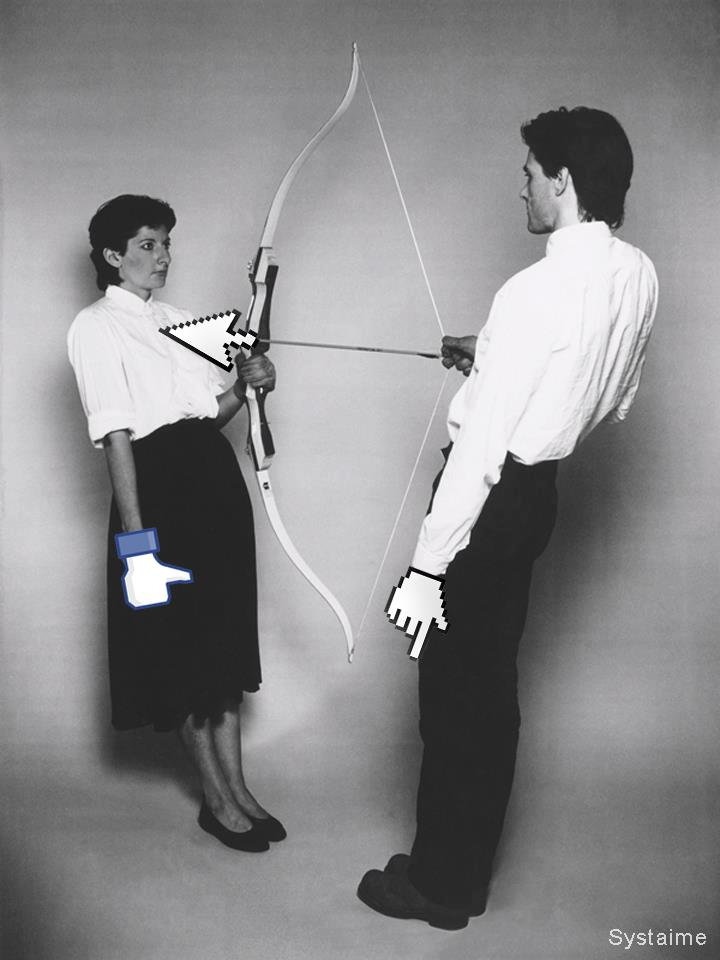
Image by Systaime. And here is the original performance.
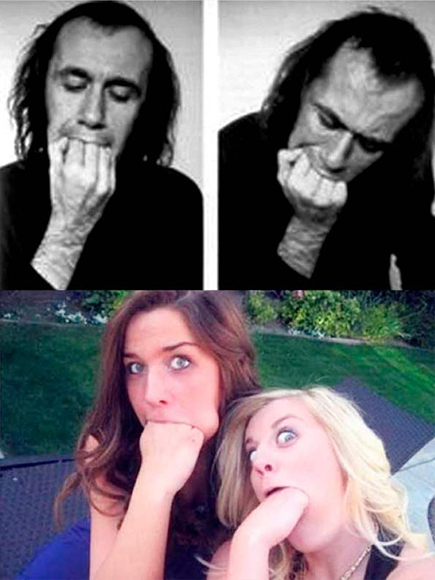
“In the information society, the world is the frame. Art, in these conditions, has the potential of being “received” by millions of people at the same time, without a hierarchy of reception.”
– Joseph Kosuth, 1968.
She Has a Hot Ass. How conceptual art influenced the World Wide Web. On Citizen Brooklyn
[thanks domenico!]
[via artinfo]
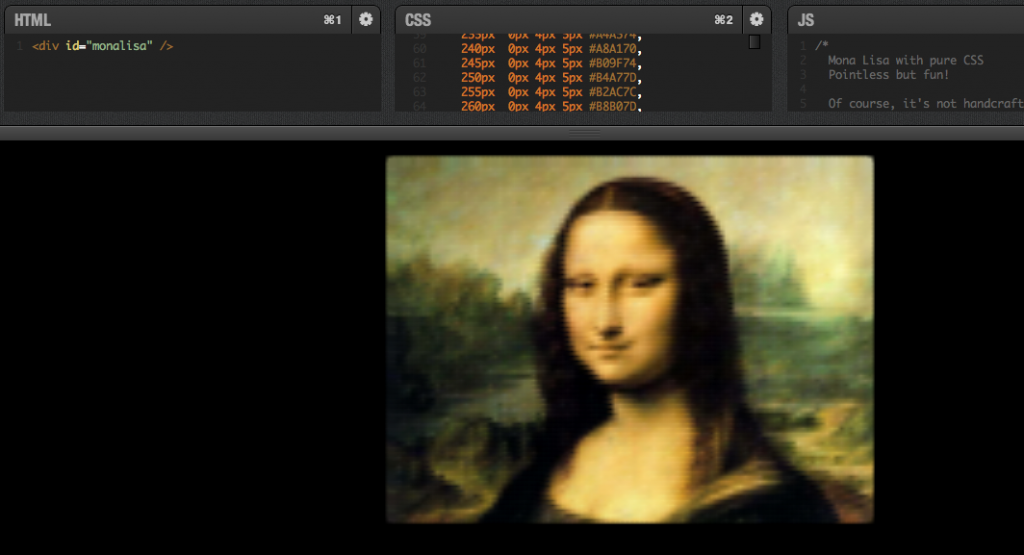
“Using over 7,500 lines of code, hacker/artist Jay Salvat created this surprisingly detailed reproduction of da Vinci’s Mona Lisa with nothing but cascading style sheets. It’s about as modern as modern art can get.”
[via gizmodo]
Francois Mazabraud, Total Vanité, 2008, bois, bouteille en plastique, coca-cola, maquette de pétrolier brisé, bois, vernis. 32 x 10 cm. Collection privée
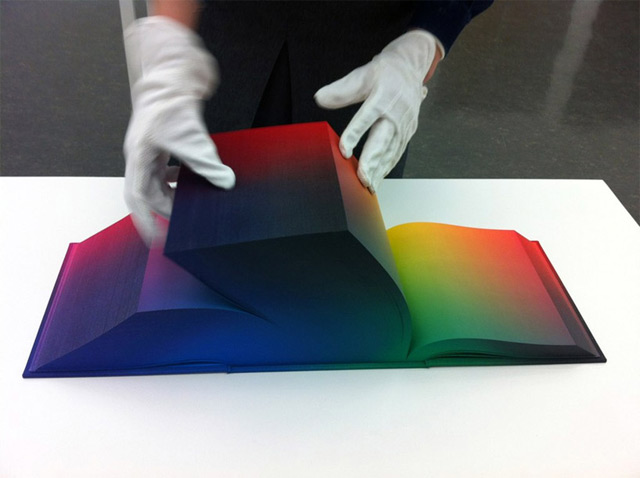

The RGB Colorspace Atlas by New York-based artist Tauba Auerbach is a massive tome containing digital offset prints of every variation of RGB color possible.
[via colossal]
“56 Broken Kindle Screens” is a print on demand paperback that consists of found photos depicting broken Kindle screens. The Kindle is Amazon’s e-reading device which is by default connected to the company’s book store.
The book takes as its starting point the peculiar aesthetic of broken E Ink displays and serves as an examination into the reading device’s materiality. As the screens break, they become collages composed of different pages, cover illustrations and interface elements.
56 Broken Kindle Screens – Photographed E Ink, Collected Online, Printed On Demand
Silvio Lorusso and Sebastian Schmieg, 2012
More info here: silviolorusso.com/home/?project=56-broken-kindle-screens
and here: sebastianschmieg.com/56brokenkindlescreens/
[via collectthewwworld]
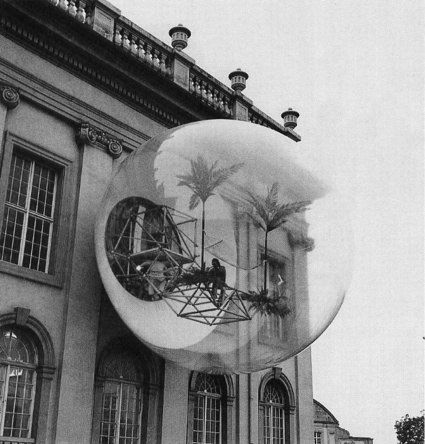
Oase Nr. 7, a personal oasis with a diameter of 8 metres protruded from the façade of the Museum Fridericianums during the 1972 Documenta.

ART SCHOOL HAZING RITUAL (AFTER DUCHAMP), 2012 – performance
“For the past 200 years, the gallery has been the home of new and cutting-edge art, a place where the art community can come together and share new ideas. But in this episode, we ask: is the web browser replacing the gallery as the best place to view amazing, cutting-edge art?!? In the era of the internet, you can view remarkable art from the comfort of your laptop. Accessible to virtually everyone, web art does away with the physical limitations of the gallery and makes impossibly cool art a part of our daily lives!”
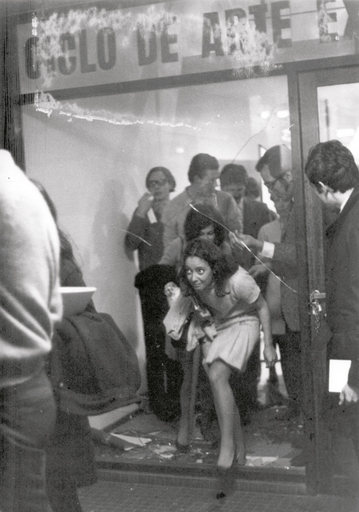
“Cycle of Experimental Art”, (1968), Rosario, Argentina by Graciela Carnevale:
In the context of Fascist Argentina, Carnevale invited an audience to an exhibition where she locked them inside the gallery for over an hour without prior notice or explanation, until the crowd finally decided to smash the glass to escape.
Two Kingston students (Luke Evans and and Josh Lake) created human photograms by swallowing 35mm film, then, erm, expelling it, and recording the results. Amazing.

Constantin Brancusi, Prometheus, c. 1926-27, Gelatin silver print
[some other incredible Brancusi’s photographs here]